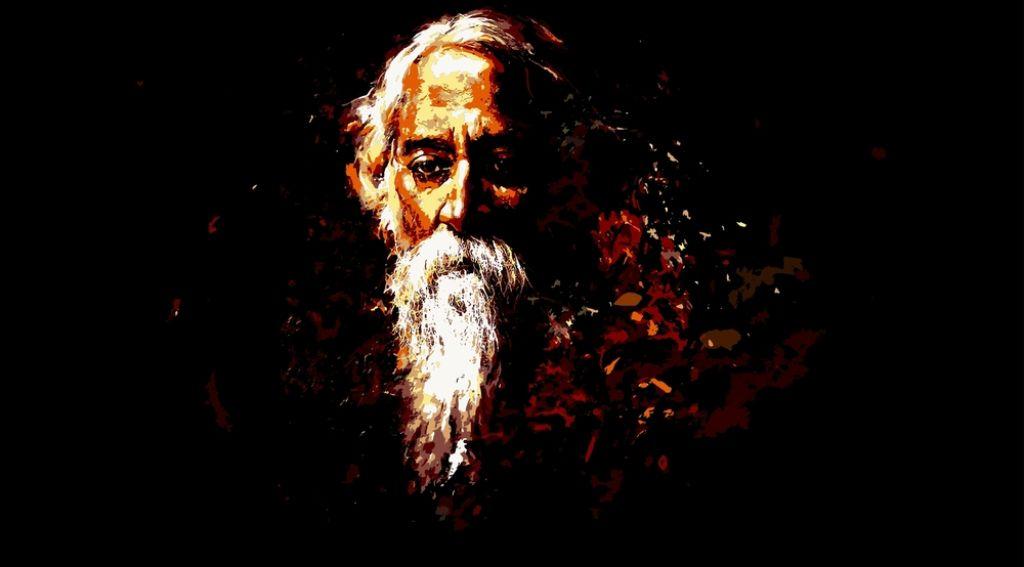
Rabindranath Tagore, one of the greatest poets and thinkers of modern India, has left an indelible mark on Indian culture and society. He was a writer, poet, philosopher, musician, and artist, and his works continue to inspire and influence people from all walks of life.He was born on May 9, 1861, in Calcutta (now Kolkata), India, into a wealthy and prominent family. Rabindranath Tagore lived a very prominent lifestyle. His father, Debendranath Tagore, was a religious reformer and leader of the Brahmo Samaj, a religious and social movement that sought to promote monotheism and social reform.
In this blog, we will explore how Tagore’s ideas and works have found their way into the homes of millions of Indians, making him a part of their daily lives.

Tagore’s works have been a part of the Indian educational curriculum for decades, and his poems and stories are often recited and taught to young children. He was the first non-European to win the Nobel Prize in Literature in 1913 for his collection of poems, Gitanjali.
Many households have a collection of Tagore’s books and poetry, which are often read and discussed by family members. His works, such as “Gitanjali,” “Kabuliwala,” and “The Home and the World,” have become a part of the cultural fabric of India, and are often quoted and referenced in everyday conversations.
In 1878, Tagore travelled to England to study law but returned to India without completing his degree. He began to write poetry, plays, and stories in Bengali and became involved in the Brahmo Samaj’s social and cultural activities.
Tagore’s philosophy of universalism and his emphasis on the importance of education and social reform have also had a significant impact on Indian society. His teachings on the importance of individual freedom, self-realization, and the need for harmonious coexistence have resonated with people from all walks of life. Many Indian households follow his teachings of non-violence and peaceful co-existence, and strive to create a harmonious and inclusive environment.

Tagore’s music and poetry are an integral part of Indian culture and are often played in households during important festivals and celebrations.Tagore was also a composer and musician who wrote over 2,000 songs, which are known as Rabindra Sangeet. His music reflects his philosophy of life, and his songs are still popular in Bengal and other parts of India. His songs, known as Rabindra Sangeet, are a fusion of classical and folk music and have a universal appeal. They are often played on the radio and television and are taught in schools and colleges. Tagore’s music, which is an integral part of Indian classical music, is also enjoyed by people across the country. Many households have recordings of his songs, and his compositions are often played during cultural and religious festivals.There are several movies based on Rabindranath Tagore’s stories. Many Hindi movies were also made based on his stories.
Tagore was a social reformer who worked to promote women’s rights, abolish child marriage, and improve the lives of the poor. He was a critic of the caste system and worked to promote social harmony and tolerance.
Tagore’s literature, particularly his short stories, has found its way into the hearts of many Indians. His stories, which deal with universal themes such as love, loss, and the human condition, are often read aloud in families, passed down from one generation to the next. His most famous work, “Gitanjali,” a collection of poems, has been translated into several languages and is widely read.
Tagore’s influence can also be seen in Indian art and architecture. His ideas about simplicity, harmony, and natural beauty have influenced Indian artists and architects, who often incorporate these ideas into their work.Tagore was a pioneer in education, and he founded the Visva-Bharati University in 1921. The university was based on his philosophy of education, which emphasized the importance of learning from nature and the community.

In conclusion, Rabindranath Tagore’s influence can be seen in every aspect of Indian life, from music and literature to education and art. His works continue to inspire and influence people, making him a part of every Indian household. His legacy is a testament to the power of ideas and the enduring impact they can have on society. His legacy of literature, music, art, and social activism continues to inspire and guide people, and his ideas of universalism and harmonious coexistence are as relevant today as they were in his time.